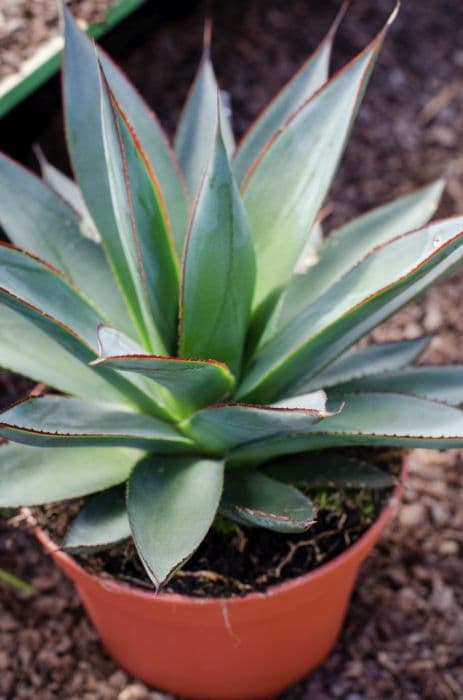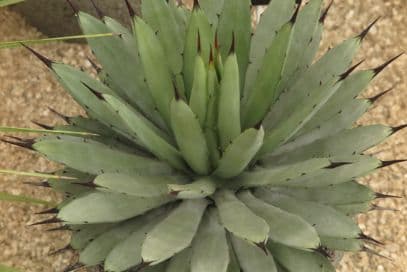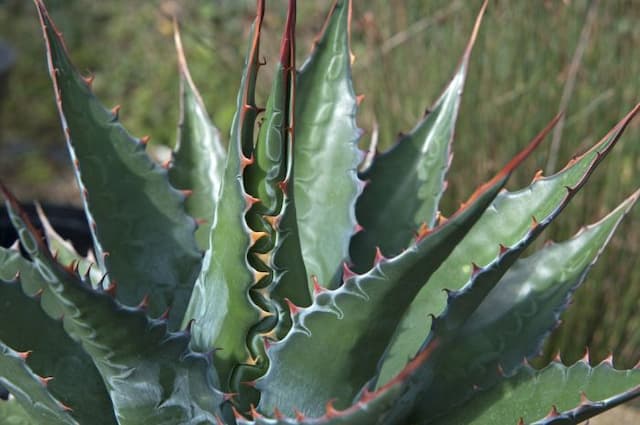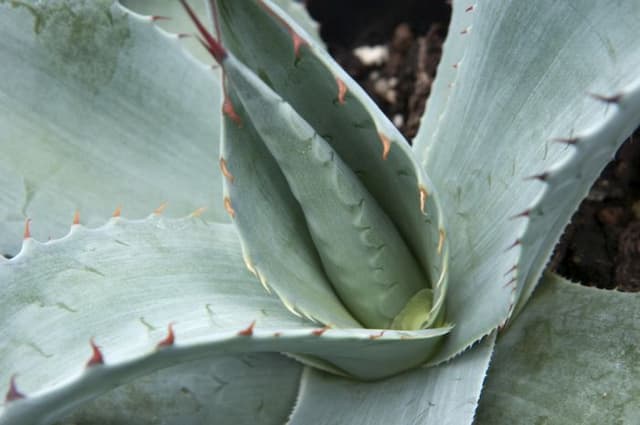Hosta Hosta 'Praying Hands' (v)

ABOUT
The 'Praying Hands' hosta is a uniquely shaped perennial plant known for its distinctive foliage. The leaves of this hosta are long and narrow with a highly unusual upright form, resembling hands folded in prayer. They have a glossy, dark green color with defined, lighter green to almost yellow margins that add a striking contrast in the garden. The foliage gives rise to an accordion-like texture, with the leaves displaying deep veins and wavy edges that contribute to their crinkled appearance. During the blooming period, the 'Praying Hands' hosta produces flower stalks that rise above the foliage. These bear lavender flowers that add a delicate ornamental touch to the plant. The bloom of these flowers introduces an additional layer of visual interest, inviting pollinators into the garden. Overall, the 'Praying Hands' hosta is known for its sculptural leaves and compact, vertical growth habit that set it apart from other hostas, making it a noteworthy and conversation-starting addition to shade gardens and landscaping designs.
About this plant
 Names
NamesFamily
Asparagaceae
Synonyms
Plantain Lily, Funkia
Common names
Hosta 'Praying Hands'
 Toxicity
ToxicityTo humans
Hostas, including the variety 'Praying Hands', are not considered highly toxic to humans, and there are no severe toxic effects reported from ingestion. However, if eaten in large amounts, they may cause mild stomach upset.
To pets
Hostas, including the variety 'Praying Hands', are toxic to pets such as dogs and cats. If ingested, they can cause symptoms such as vomiting, diarrhea, and depression. In severe cases, ingestion may lead to more serious complications, but such severe reactions are rare. Pet owners should prevent their animals from eating this plant.
 Characteristics
CharacteristicsLife cycle
Perennials
Foliage type
Deciduous
Color of leaves
Variegated
Flower color
Lavender
Height
1 foot 6 inches (45.72 cm)
Spread
1 foot (30.48 cm)
Plant type
Herb
Hardiness zones
3-9
Native area
Northeast Asia
Benefits
 General Benefits
General Benefits- Unique Foliage: Has distinct upright leaves resembling praying hands, adding visual interest to the garden.
- Shade Tolerance: Thrives in shaded areas where other plants might struggle.
- Low Maintenance: Requires minimal care once established, making it ideal for busy gardeners.
- Drought Resistance: Can withstand periods of drought, reducing the need for frequent watering.
- Pest Resistance: Generally resistant to common garden pests such as slugs and deer.
- Versatile Landscaping: Works well in a variety of landscape designs including borders, woodland settings, and container gardening.
- Seasonal Interest: Offers a long season of interest from spring through fall, with foliage changing color.
 Medical Properties
Medical PropertiesThis plant is not used for medical purposes.
 Air-purifying Qualities
Air-purifying QualitiesThis plant is not specifically known for air purifying qualities.
 Other Uses
Other Uses- Container Gardens: Hosta Praying Hands can be grown in pots or container gardens where ground space is limited, adding lush foliage to balconies and patios.
- Floral Arrangements: The distinctive leaves of Hosta Praying Hands can be used in cut flower arrangements to provide a unique texture and shape.
- Garden Sculptures: By carefully pruning Hosta Praying Hands, gardeners can shape the plant to resemble a variety of sculptures or patterns in the landscape.
- Shade Garden Accent: This variety of Hosta serves as an architectural accent plant in shade gardens due to its upright growth habit and folded leaves.
- Photography Subject: The unusual appearance of Hosta Praying Hands' leaves makes it a popular subject for garden photographers and botanical artists.
- Education and Demonstration: Hosta Praying Hands can be used in educational gardens or demonstrations to show the diversity of plant forms and adaptations.
- Culinary Garnish: Although not commonly consumed, the leaves of Hosta Praying Hands can be used as an unusual, non-toxic garnish for culinary presentation.
- Living Borders: This Hosta variety can be planted in rows to create a living border or edge along garden paths or walkways.
- Water Garden Accent: While Hosta Praying Hands is not an aquatic plant, it can be used to accent water features such as ponds or fountains due to its love for moist soil.
- Companion Planting: Hosta Praying Hands can be used in companion planting to provide contrast and texture when paired with other shade-loving perennials.
Interesting Facts
 Feng Shui
Feng ShuiThe Hosta is not used in Feng Shui practice.
 Zodiac Sign Compitability
Zodiac Sign CompitabilityThe Hosta is not used in astrology practice.
 Plant Symbolism
Plant Symbolism- Devotion and Prayer: The unique upright positioning and folded appearance of the Hosta 'Praying Hands' leaves resemble hands in prayer, symbolizing devotion, spiritual contemplation, and a connection with the divine.
- Uniqueness: With its distinctive leaf structure, Hosta 'Praying Hands' stands out from other hostas, representing individuality and the beauty of being different.
- Peace: Hostas in general are known for their calming greenery, and the 'Praying Hands' variety, in particular, invokes a sense of tranquility and peace, making it a popular choice for meditation gardens.
 Water
WaterHostas, including 'Praying Hands', prefer consistent moisture and should be watered thoroughly once a week with about one gallon of water per plant. Increase watering to twice a week during hot, dry spells to keep the soil evenly moist but never soggy. To avoid leaf burn and fungal diseases, water the plant at the base and early in the morning, allowing the foliage to dry throughout the day. During the winter, reduce watering as the plant requires less moisture when dormant.
 Light
LightHostas like 'Praying Hands' thrive in partial to full shade conditions. They perform best in a spot that receives morning sunlight and afternoon shade, protecting their leaves from the harsh midday sun. Bright, indirect light will help to enhance the leaf color and patterns without risking sunscald.
 Temperature
TemperatureHostas like 'Praying Hands' prefer cooler temperatures and are hardy in zones 3 to 9. They can tolerate a range of temperatures but grow best when the weather is between 60 and 75 degrees Fahrenheit. 'Praying Hands' should not be exposed to temperatures below 30 degrees Fahrenheit or above 95 degrees Fahrenheit for extended periods as this can damage the plant.
 Pruning
PruningPruning of 'Praying Hands' hostas is usually not necessary for the health of the plant but can be done to remove any dead or damaged leaves. This helps to maintain a tidy appearance and reduce the potential for disease. The best time for pruning is in the spring when new growth begins or in the fall after the plant has gone dormant. Remove spent flower stalks after blooming to redirect energy back to the leaves.
 Cleaning
CleaningAs needed
 Soil
SoilHostas, commonly known as plantain lilies, thrive in well-draining, moist soil rich in organic matter. A soil mix with equal parts garden soil, peat moss, and perlite or pine bark fines is ideal. Aim for a soil pH of 6.0 to 7.5, slightly acidic to neutral, for optimal growth and health.
 Repotting
RepottingHostas usually need to be repotted every 3-5 years. Dividing clumps can be done during repotting. If growth slows or roots circle the pot, it's time to repot.
 Humidity & Misting
Humidity & MistingPlantain lilies prefer a humidity level of 50-60% but are quite adaptable and can tolerate some variability as long as they are not in excessively dry conditions.
 Suitable locations
Suitable locationsIndoor
Keep in bright, indirect light and away from dry heat sources.
Outdoor
Plant in part shade to full shade in fertile, moist soil.
Hardiness zone
3-9 USDA
 Life cycle
Life cycleHosta 'Praying Hands', commonly known as Praying Hands Hosta, begins its life cycle when its seeds germinate in moist, well-draining soil, ideally in a shaded or partly shaded area. The seedlings emerge and develop into young plants with characteristically upright, folded leaves resembling hands in prayer. As the plant matures, it forms a tight clump of foliage, expanding outward and upwards each growing season. Throughout late spring to summer, it sends up tall flower spikes with bell-shaped, lavender flowers that are attractive to bees and butterflies. After blooming, seeds form and can be dispersed to generate new plants, although Hostas are more commonly propagated by division. The plant then enters dormancy in the winter, with foliage dying back, to conserve energy and re-emerge stronger in the following spring.
 Propogation
PropogationPropogation time
Early spring
The most popular method for propagating Hosta 'Praying Hands', also known as hosta, is through division. This process is typically done in the early spring or fall when the plant is not in active growth. To divide a hosta, dig up the entire plant, making sure to keep a good amount of soil around the roots. Using a sharp knife or spade, cut through the root ball to separate it into smaller sections, each with at least two or three shoots and a corresponding portion of the root system. Replant the divisions at the same depth they were growing previously and water them thoroughly. In time, these divisions will grow into mature plants that are identical to the parent. Dividing hostas not only propagates the plants but also rejuvenates older clumps that may have become too dense.









